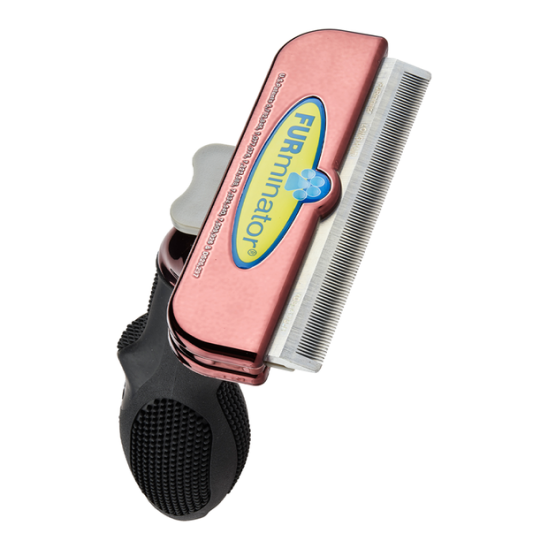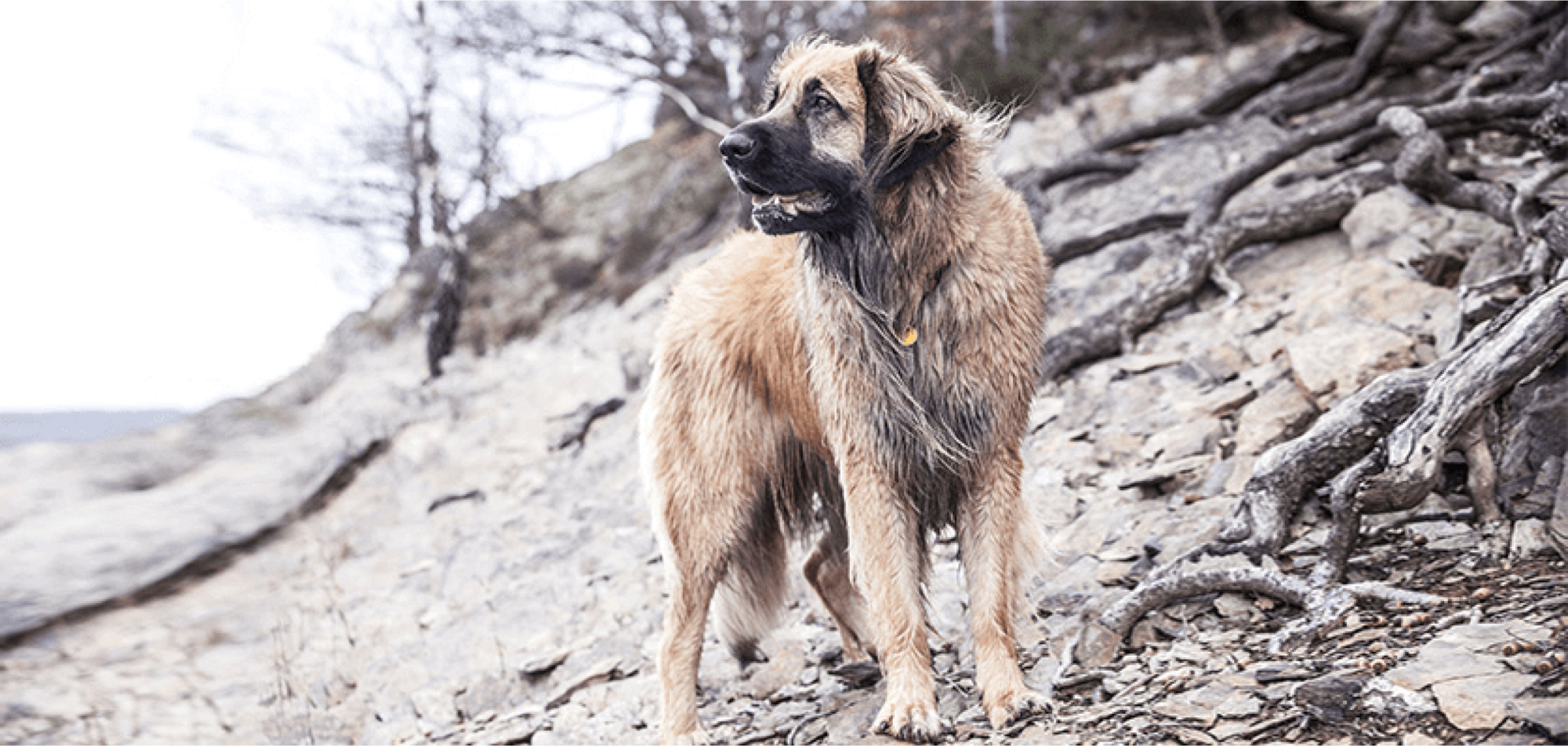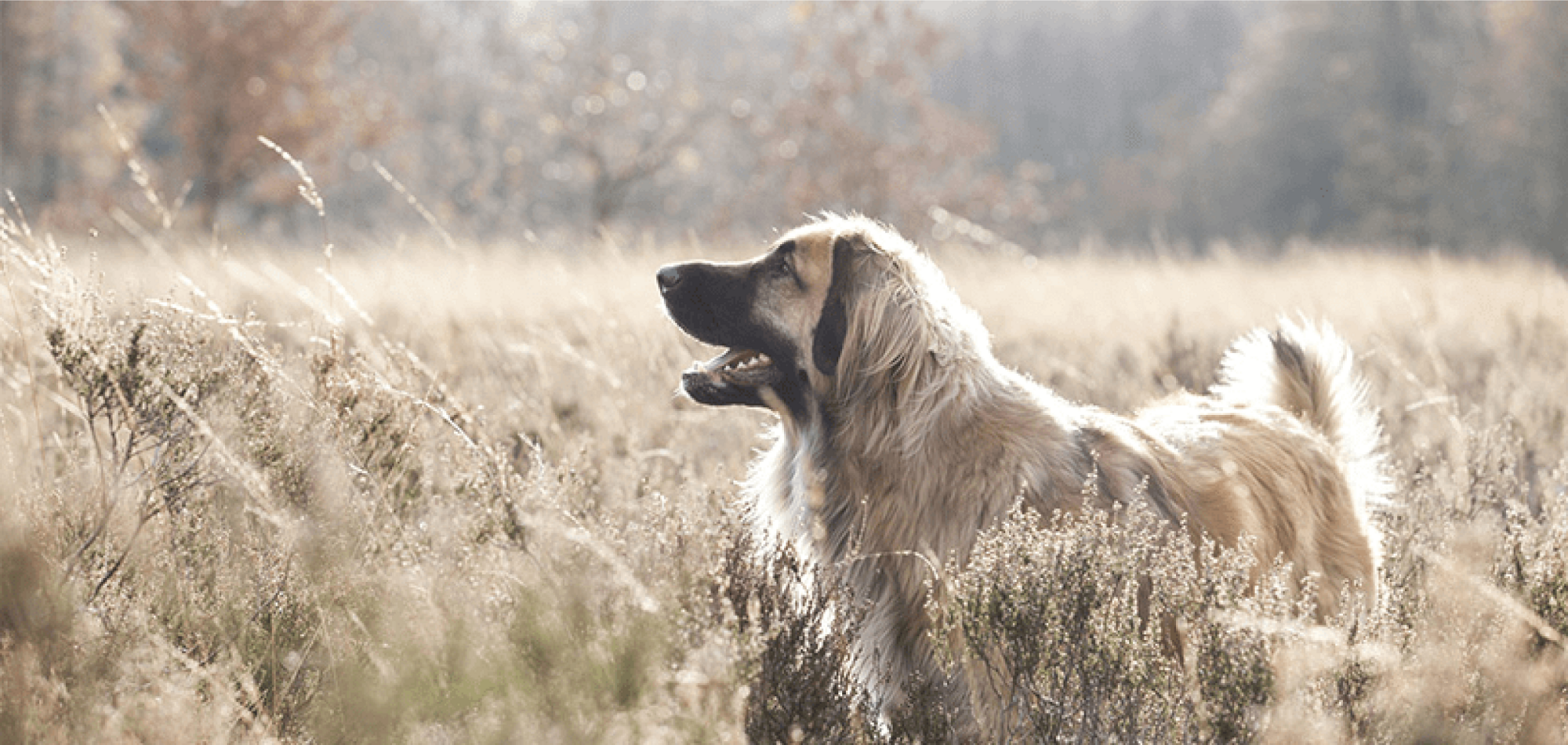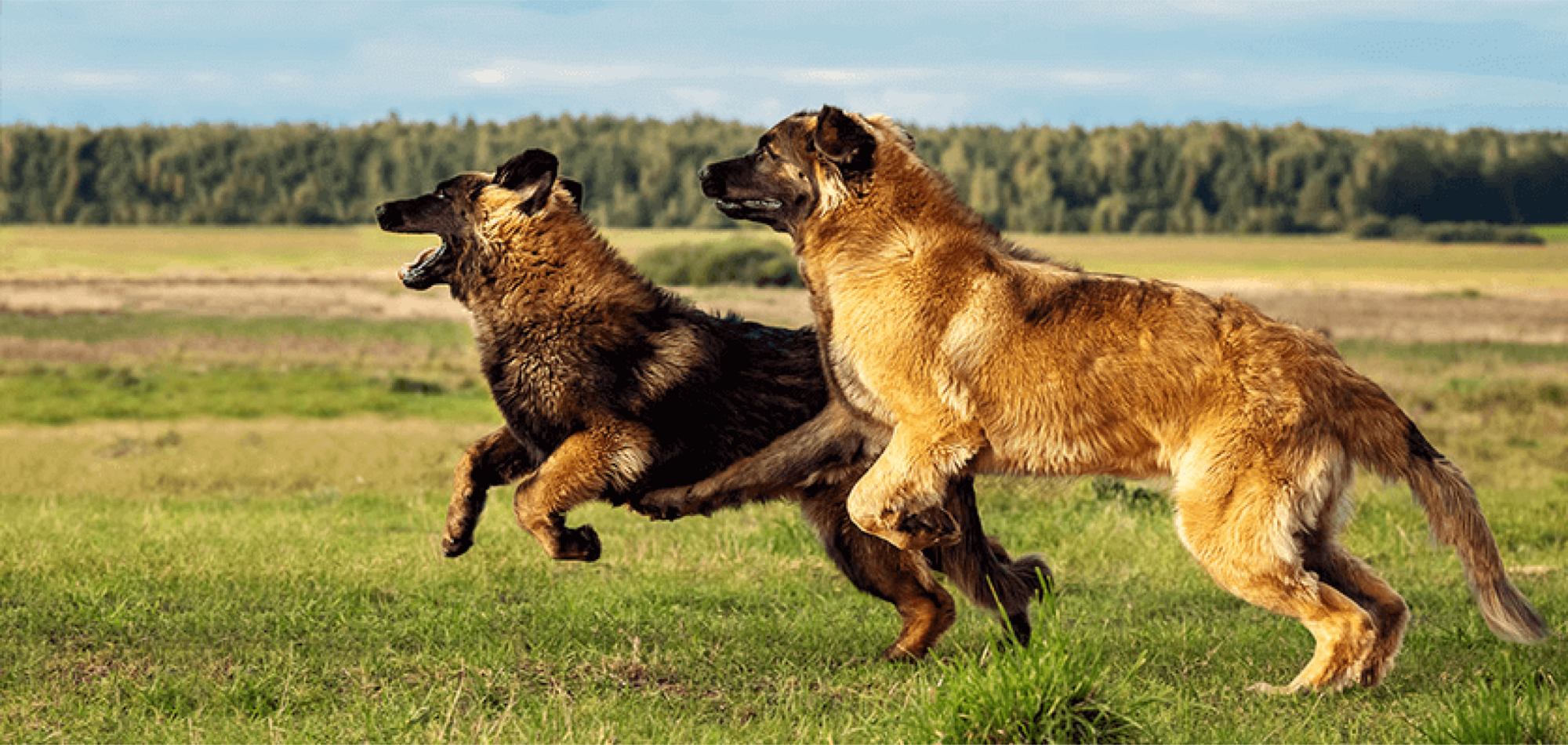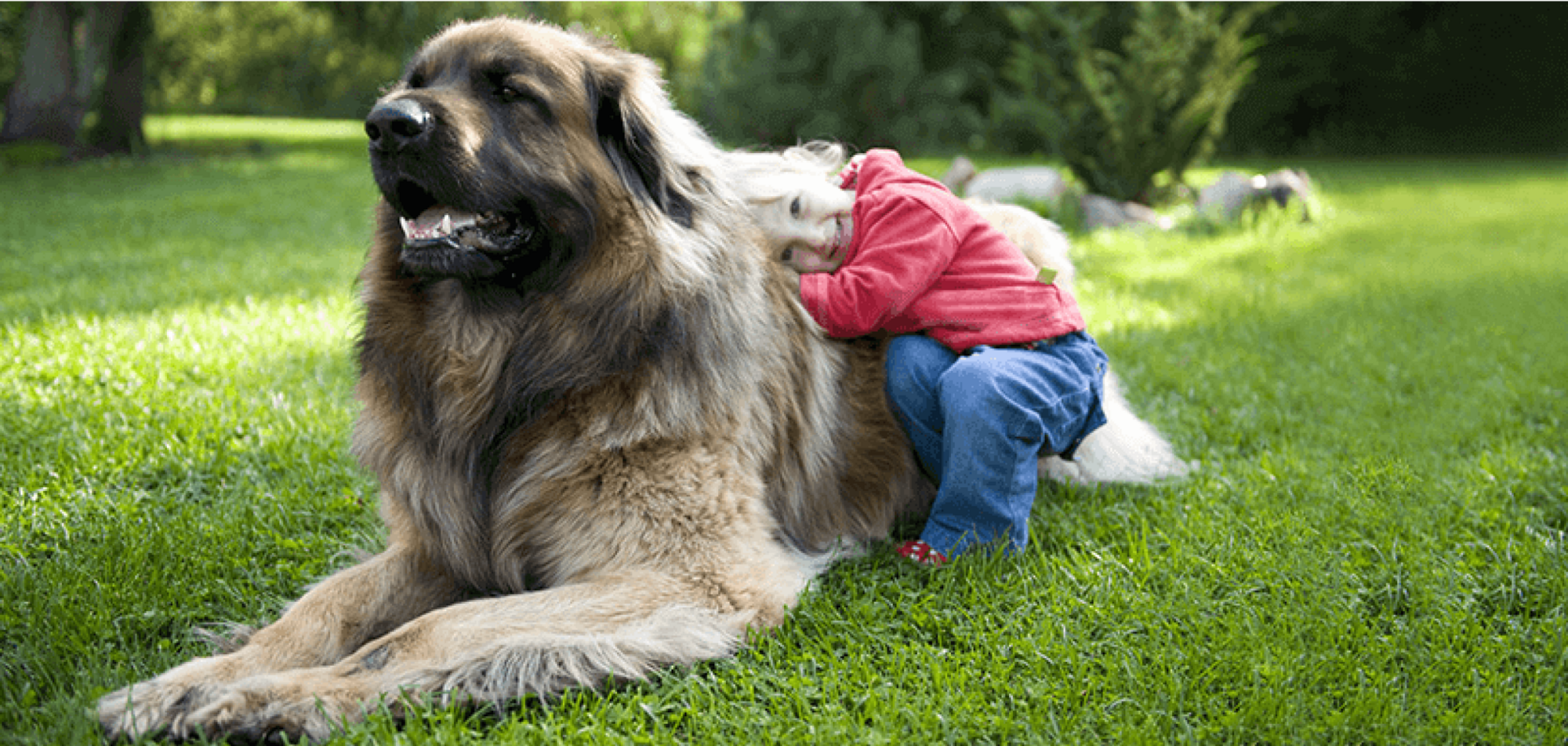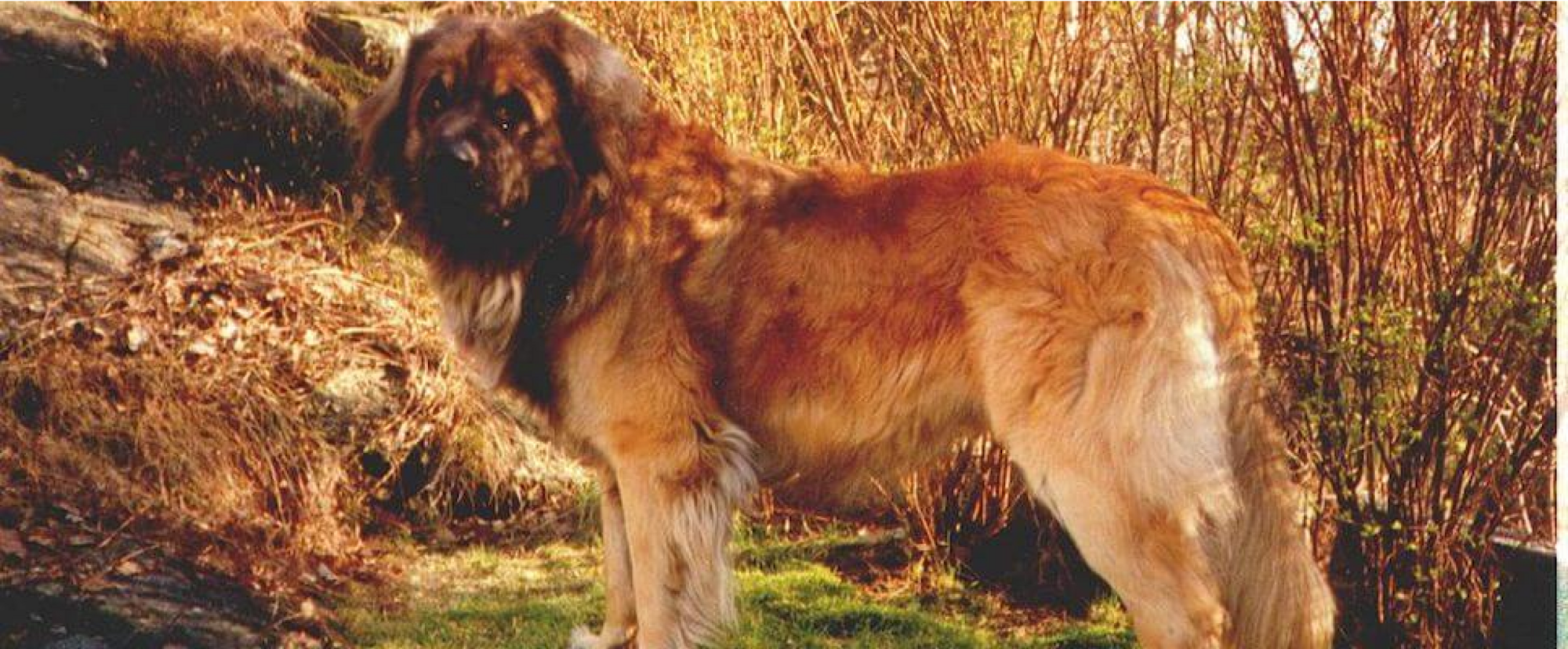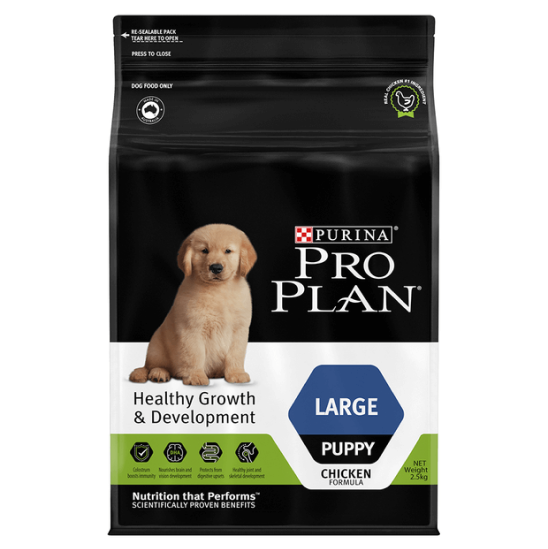The Leonberger can be prone to orthopaedic problems including hip and elbow dysplasia, osteochondritis dessicans and panosteitis. Also have a heightened risk of some eye diseases including entropion and ectropion, as well as osteosarcoma, polyneuropathy, Addison's disease, hypothyroidism, and gastic torsion.
Hip Dysplasia
The term 'dysplasia' means abnormal growth, therefore 'hip dysplasia' means abnormal growth or development of the hips. What causes hip dysplasia? While the condition is primarily genetic in origin, the degree of hip dysplasia will vary between dogs due to a combination of factors such as body weight, nutrition, hormonal factors and other environmental considerations such as exercise. It's important to note that the inheritance of the gene is not simple, and breeding dogs with 'normal' hips can give rise to offspring with dysplastic hips and vice versa. The Orthopaedic Foundation of America publishes statistics of certain breed-related conditions based on breed and is worth a look if you are considering owning a Leonberger. For example, of the 2,766 Leonberger dogs examined in the United States, 14.0% of the hips were found to be abnormal. You can access the full report at the Orthopaedic Foundation of America website.
How to prevent hip dysplasia? Responsible breeders will ensure their breeding stock is tested prior to breeding. Since 2016, the Australian National Kennel Council Ltd (ANKC) have been responsible for the Canine Hip and Elbow Dysplasia Scheme (CHEDS) which is weighted towards secondary joint changes associated with hip dysplasia. It's important to note that some of these changes may not be evident at 12 months of age and in some cases, not before 24 months of age. To help identify this condition at an earlier age, the PennHIP scheme is available which assesses hip laxity using radiography and a distraction index and can be performed as early as 4 months of age. For more information about how to diagnose and manage this condition, take a read through Hip Dysplasia in Dogs, contact our Vet Squad or speak with your regular veterinarian.
Elbow Dysplasia
Elbow dysplasia affects the elbow joint, which is an articulation of three bones, the humerus, radius and ulna. The correct alignment of the joint requires each bone to grow at the correct rate otherwise dysplasia can occur. While there are a few different locations in the joint where dysplasia can occur, each with different potential underlying causes, the end result is the same. Dogs with elbow dysplasia typically display signs of lameness in one or both front limbs at around 4 to 10 months of age, with arthritis appearing and worsening with age.
Panosteitis
Panosteitis is a disease affecting bone production, which causes lameness and bone pain. It is thought that there may be a relationship between high-protein, high-calorie diets, leading to fluid accumulation and increased pressure within the developing bone.
Osteochondritis Dissecans (OCD)
OCD is a joint disease in which a flap of cartilage lifts from the joint surface, commonly in the shoulders, elbows, knees and hocks of young large and giant breed dogs. This causes joint pain and lameness.
